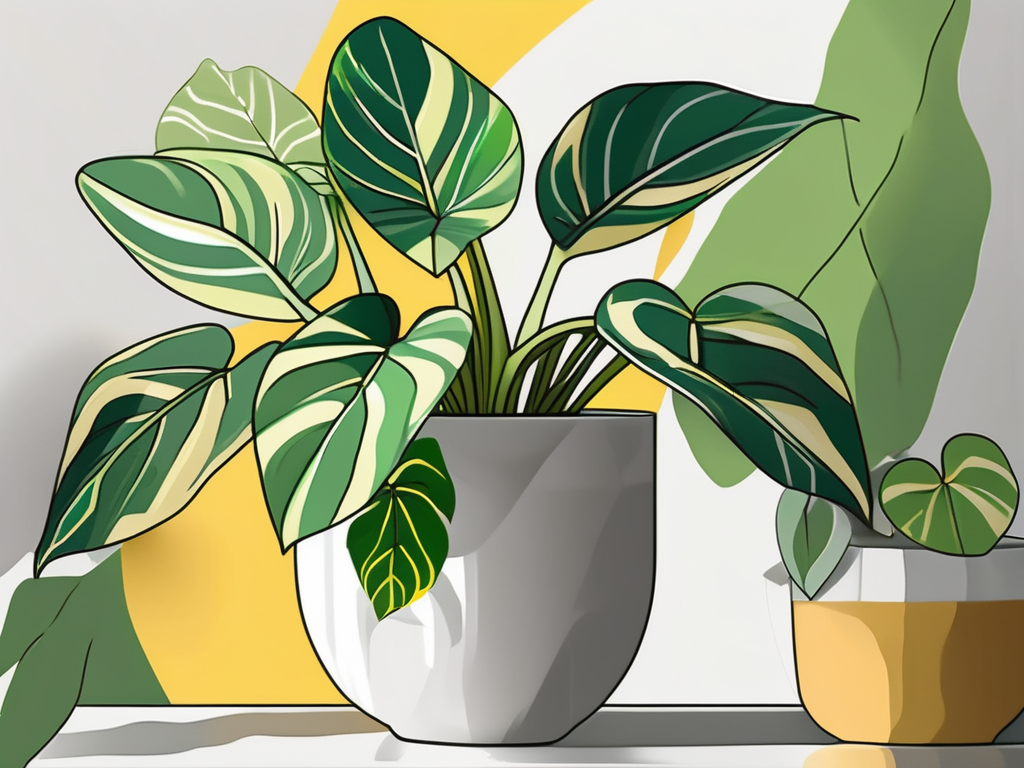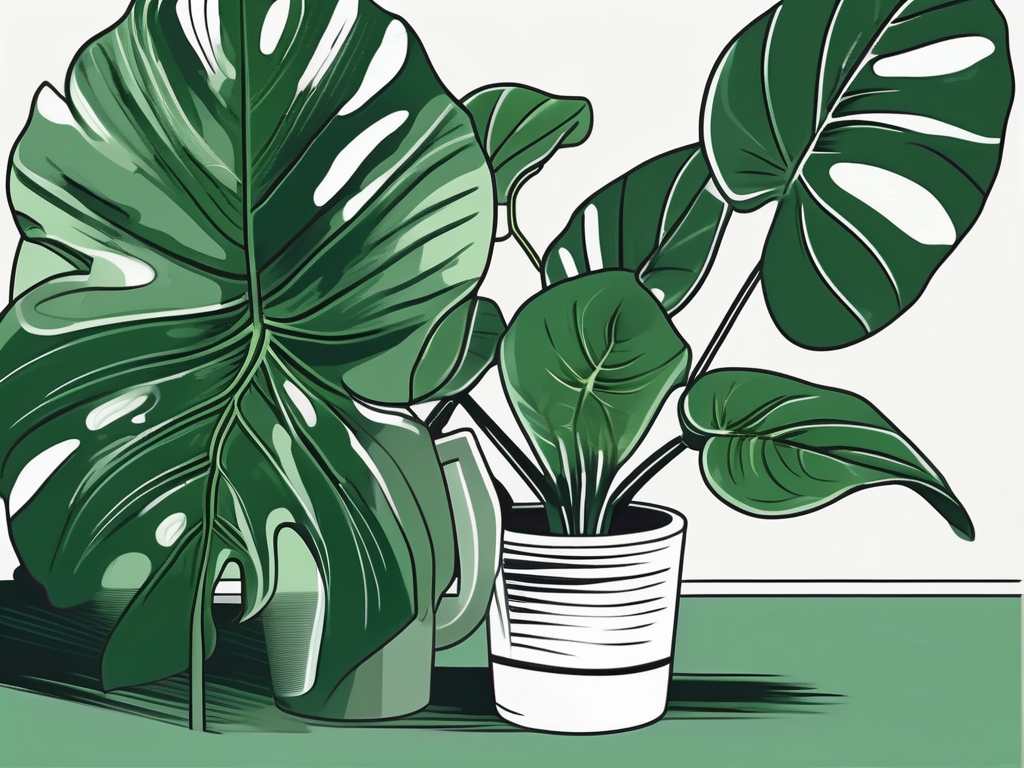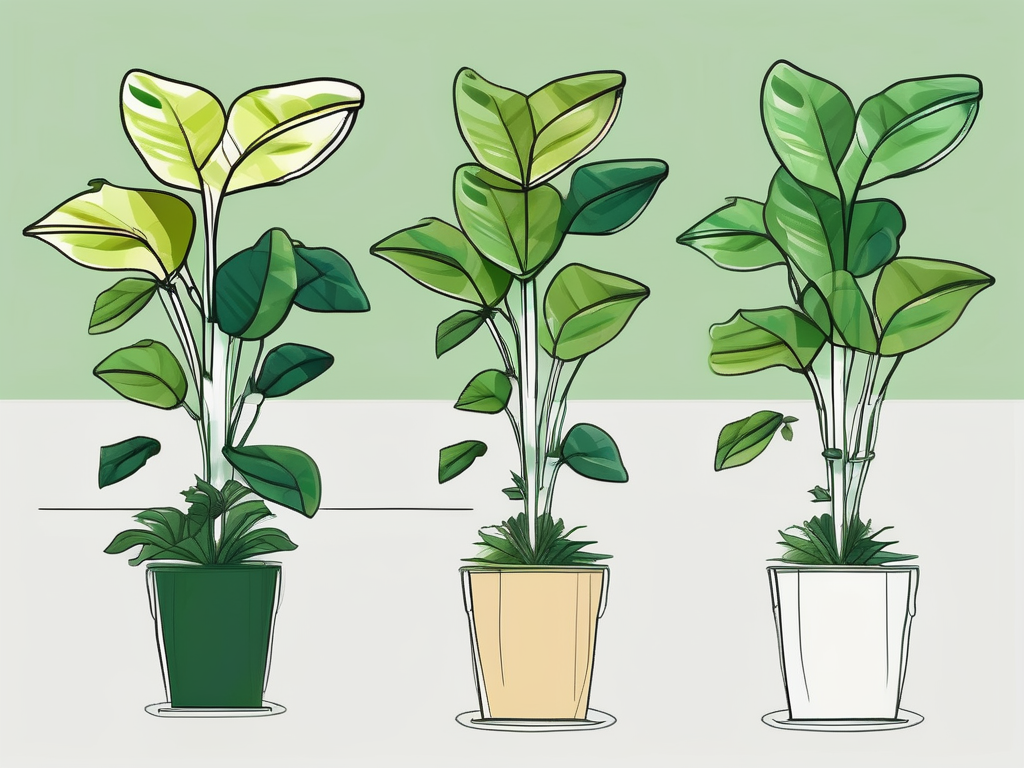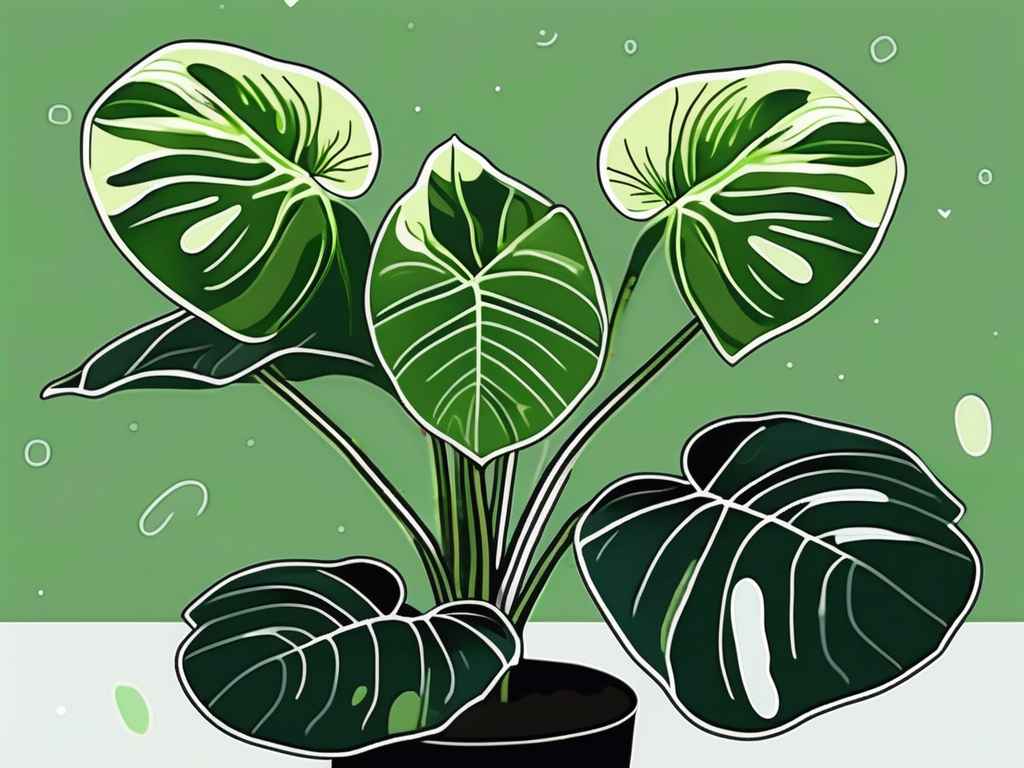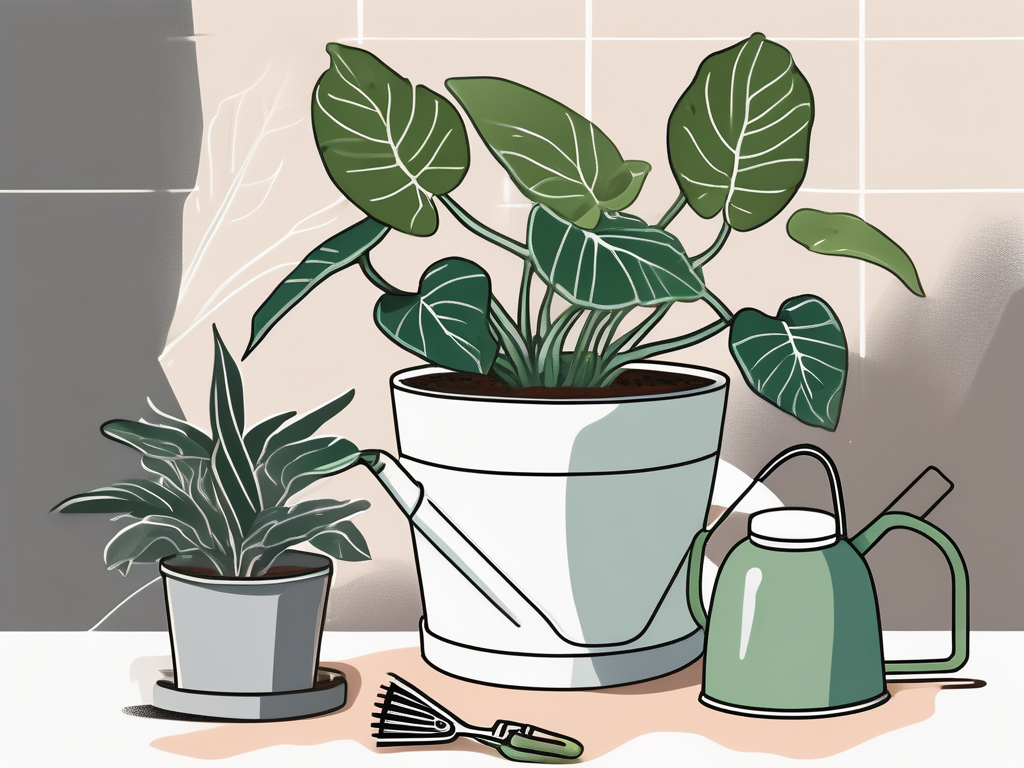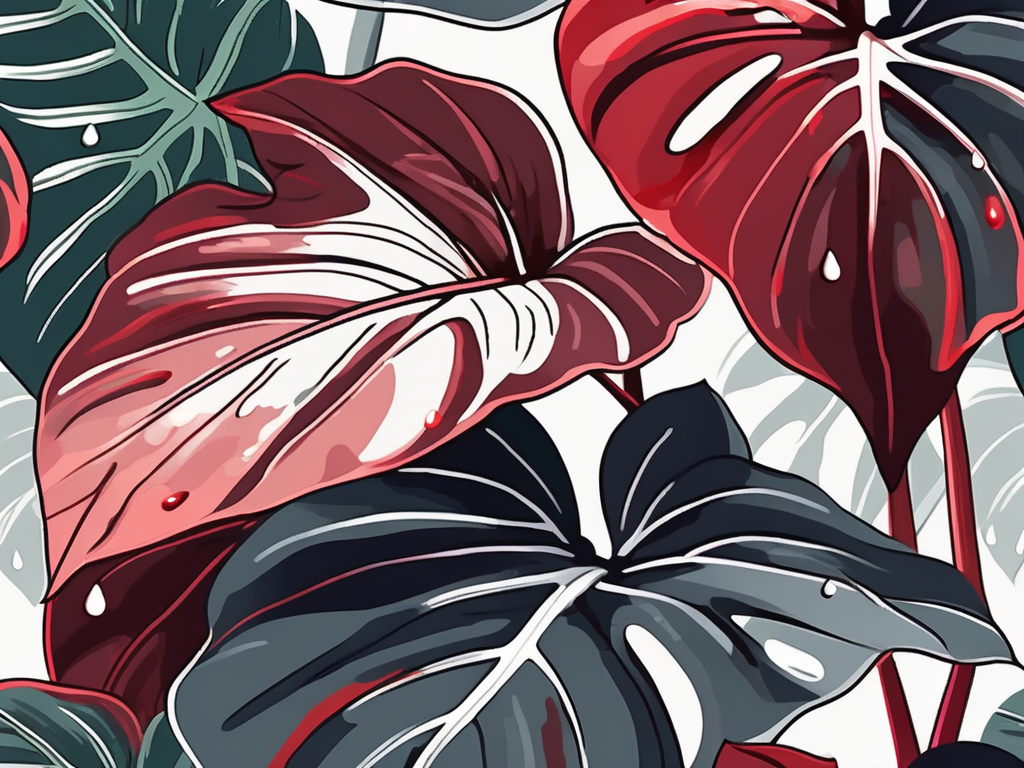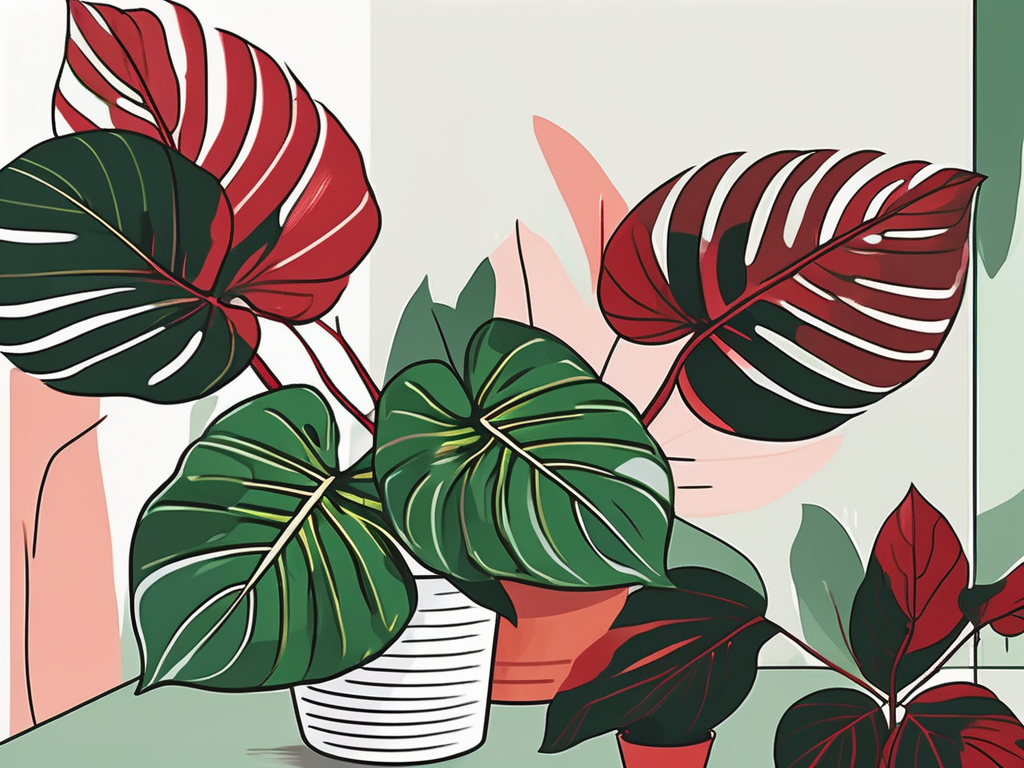
Philodendron Congo Rojo is a stunning plant that adds a touch of elegance and color to any indoor space. With its deep burgundy and green leaves, this tropical beauty is a favorite among plant lovers for its vibrant appearance and relatively easy care.
In this guide, we'll walk you through everything you need to know about caring for your Philodendron Congo Rojo. From light and water requirements to dealing with pests and incorporating it into your home decor, we've got you covered. So, let's get started on making your Philodendron thrive!
Understanding Philodendron Congo Rojo
Before we get into the nitty-gritty of care tips, let's take a moment to appreciate what makes the Philodendron Congo Rojo so special. This plant is a hybrid variety, which means it's been bred for its unique characteristics, namely those striking red stems and glossy, dark leaves. It's a member of the Araceae family, known for being hardy and adaptable, making it an excellent choice for both novice and experienced plant parents.
One of the standout features of the Congo Rojo is its ability to grow well with minimal fuss. Unlike some of its more finicky relatives, this plant is forgiving and resilient, which is always a plus when you're juggling a busy schedule. Its upright, bushy habit means it can make a bold statement in any room, whether perched on a shelf or as a floor-standing centerpiece.
It's interesting to note that the Congo Rojo has a moderate growth rate, so while it won't take over your living room overnight, it will fill out nicely given the right conditions. This makes it perfect for those who appreciate steady, manageable growth. Plus, it’s an air purifier, which is a bonus if you’re looking to improve the air quality in your home.
Light Requirements
When it comes to light, the Philodendron Congo Rojo is quite versatile, but it does have its preferences. Ideally, this plant thrives in bright, indirect light. Think of the lighting conditions you might find under a tree canopy in a tropical forest—dappled sunlight rather than direct rays. This type of lighting helps the plant maintain its vibrant leaf color without scorching.
If your home doesn’t offer a lot of natural light, don't worry. The Congo Rojo can adapt to lower light conditions, though its growth might slow down a bit, and the leaves may not be as vibrant. On the flip side, too much direct sunlight can lead to leaf burn, which you’ll notice as browning or yellowing edges. If you see this happening, consider moving your plant to a spot with filtered light.
For those working with artificial lighting, this plant can still thrive. Just ensure that the lights are not too close to the leaves, and aim for a balance that mimics natural daylight as much as possible. Rotating your plant every few weeks can also help ensure even growth, as it tends to lean towards the light source.
Watering Tips
Getting the watering routine right is crucial for keeping your Philodendron Congo Rojo healthy. Like many houseplants, it prefers to dry out a bit between waterings. Overwatering is a common mistake, so it's better to err on the side of caution.
A good rule of thumb is to water your plant when the top two inches of soil feel dry to the touch. This usually means watering every 1-2 weeks, depending on the season and the humidity levels in your home. During the growing season (spring and summer), you might find it needs more frequent watering, while in the cooler months, you can cut back.
Make sure your pot has drainage holes to prevent water from sitting at the bottom, which can lead to root rot. If you’re unsure whether it’s time to water, it’s better to wait another day or two. Remember, underwatering is easier to fix than overwatering.
One practical tip is to use room temperature water, as very cold or hot water can shock the plant. If you’re using tap water, let it sit out overnight to allow any chlorine to evaporate, which can be harmful to sensitive roots.
Soil and Potting
Philodendron Congo Rojo isn't too picky about soil, but it does prefer a well-draining mix. A combination of potting soil, perlite, and orchid bark will provide the aeration and drainage it needs. This type of soil mix mimics the loose, airy substrate found on the forest floor, allowing roots to breathe while retaining enough moisture to keep the plant happy.
When it comes to repotting, this plant doesn't mind being a bit root-bound, so you won't need to rush into getting a bigger pot. Typically, repotting every 2-3 years is sufficient. You'll know it's time when you see roots growing out of the drainage holes or if the plant becomes top-heavy.
When you do repot, choose a pot that's just a couple of inches larger in diameter than the current one. Too large of a pot can lead to overwatering issues. Also, make sure it has drainage holes to prevent waterlogging. Adding a layer of pebbles at the bottom of the pot can also help improve drainage.
Humidity and Temperature
As a tropical plant, the Philodendron Congo Rojo loves humidity. While it can tolerate average home humidity levels, it truly thrives in a more humid environment. If your home is particularly dry, especially in winter, you might consider using a humidifier or placing your plant on a pebble tray with water to increase the humidity around it.
In terms of temperature, this plant prefers a range between 65°F to 80°F (18°C to 27°C). It doesn't like sudden temperature changes, so keep it away from drafty windows or doors and heating vents. If you’re comfortable in your home, chances are your Philodendron will be too.
If you’re looking for a natural way to boost humidity, grouping your plants together can create a microclimate that’s beneficial to all. Misting the leaves occasionally can also help, but be sure to do this in the morning so the leaves have time to dry before evening, reducing the risk of fungal issues.
Fertilizing Your Plant
Philodendron Congo Rojo doesn't require heavy feeding, but it does appreciate a little nutrient boost during its growing season. A balanced, water-soluble fertilizer diluted to half strength every 4-6 weeks during the spring and summer can work wonders for its growth and leaf color.
During the fall and winter months, when the plant's growth naturally slows, you can cut back on feeding or stop altogether. Over-fertilizing can lead to salt buildup in the soil, which can harm the roots, so err on the side of caution.
If you notice the leaves are smaller than usual or the plant seems to be growing more slowly, it might be a sign that it needs a little extra nourishment. However, always confirm that your watering and lighting conditions are optimal before adjusting fertilizer levels.
Organic alternatives like worm castings or compost tea can also be used to feed your plant. These are great options if you’re looking to go the natural route, and they can help improve soil health over time.
Pruning and Maintenance
Pruning your Philodendron Congo Rojo is more about maintaining its shape and removing any dead or damaged leaves than aggressive cutting. Regularly inspecting your plant and trimming off any yellow or brown leaves can help it stay healthy and attractive.
If your plant becomes too leggy or sparse, pruning can encourage bushier growth. Simply cut back to a node (the point where leaves attach to the stem), and new growth should emerge from there. You can also use pruned stems to propagate new plants, which is a fun way to expand your collection.
Always use sharp, clean scissors or pruners to avoid damaging the plant or spreading disease. Wiping the blades with rubbing alcohol before and after use is a good practice to keep your tools sanitized.
Dust can accumulate on those beautiful leaves, so giving them a gentle wipe with a damp cloth every few weeks can help them shine and improve photosynthesis. Plus, it’s a great time to check for any pests or issues that might need addressing.
Dealing with Pests
While the Philodendron Congo Rojo is relatively pest-resistant, it's not entirely immune. Common culprits include spider mites, aphids, and mealybugs. Regularly inspecting your plant will help you catch any infestations early before they become a bigger problem.
If you do notice pests, there are several natural ways to deal with them. A simple solution of water and mild dish soap can be sprayed on the leaves to help dislodge and kill pests. Neem oil is another effective option, as it's a natural insecticide that can be safely used on houseplants.
For a more hands-on approach, you can gently wipe the leaves with a cotton swab dipped in rubbing alcohol to remove bugs. Consistency is key, so repeat treatments every few days until the pests are gone.
Keeping your plant healthy is the best defense against pests, so ensure it's getting the right amount of light, water, and nutrients. Healthy plants are less likely to become victims of pest infestations.
Incorporating Philodendron Congo Rojo into Your Interior Design
Aside from its care requirements, the Philodendron Congo Rojo is a beautiful addition to any home decor. Its bold foliage can complement various interior styles, from modern to bohemian. When deciding where to place your plant, consider both its light needs and the visual impact you want it to have in the room.
If you’re looking to create a focal point, placing it in a decorative pot on a plant stand can elevate its presence. The contrast of the dark leaves against a light or colorful container can really make it pop. For a more subtle look, group it with other plants of varying heights and textures to create an indoor jungle vibe.
This plant also works well as a natural divider in open-plan spaces. Its size and structure can help delineate areas without the need for bulky furniture. Whether you're accenting a cozy reading nook or adding life to an office desk, the Congo Rojo can seamlessly integrate into your space.
Remember, the pot you choose can also be a style statement. From minimalist ceramics to rustic baskets, the options are endless. Just ensure the pot has proper drainage, and consider using a saucer to protect your surfaces.
Propagation Tips
Propagating Philodendron Congo Rojo is a rewarding way to multiply your plant collection and share the love with friends and family. The most common method is by stem cuttings. Here’s a step-by-step guide to get you started:
- Choose a healthy stem with at least one node and a few leaves. The node is crucial as it's where new roots will grow.
- Using clean, sharp scissors, cut the stem just below the node.
- Remove any leaves near the base of the stem to prevent them from rotting in water.
- Place the cutting in a glass of water, ensuring the node is submerged.
- Change the water every few days to keep it fresh and prevent bacterial growth.
- After a few weeks, you should see roots developing. Once they're a few inches long, you can transfer the cutting to a pot with soil.
Alternatively, you can plant the cutting directly into soil, but this method might take a bit longer. Just keep the soil moist and place the pot in a warm, bright spot to encourage rooting.
Propagation not only helps you grow more plants but also gives you the opportunity to observe and learn about plant growth and development. Plus, it’s a wonderful way to share a piece of your home with others.
Final Thoughts
The Philodendron Congo Rojo is a versatile and striking plant that can bring life and color to your home with the right care. From understanding its light and water needs to dealing with pests and incorporating it into your decor, this guide provides all the essentials to help your plant thrive.
At Cafe Planta, we’re passionate about helping you succeed in your plant journey. Whether you have questions about plant care or are looking for unique additions to your collection, feel free to reach out to us via email or Instagram. We’re here to help you cultivate a beautiful and thriving indoor garden that brings joy and connection to your life.













